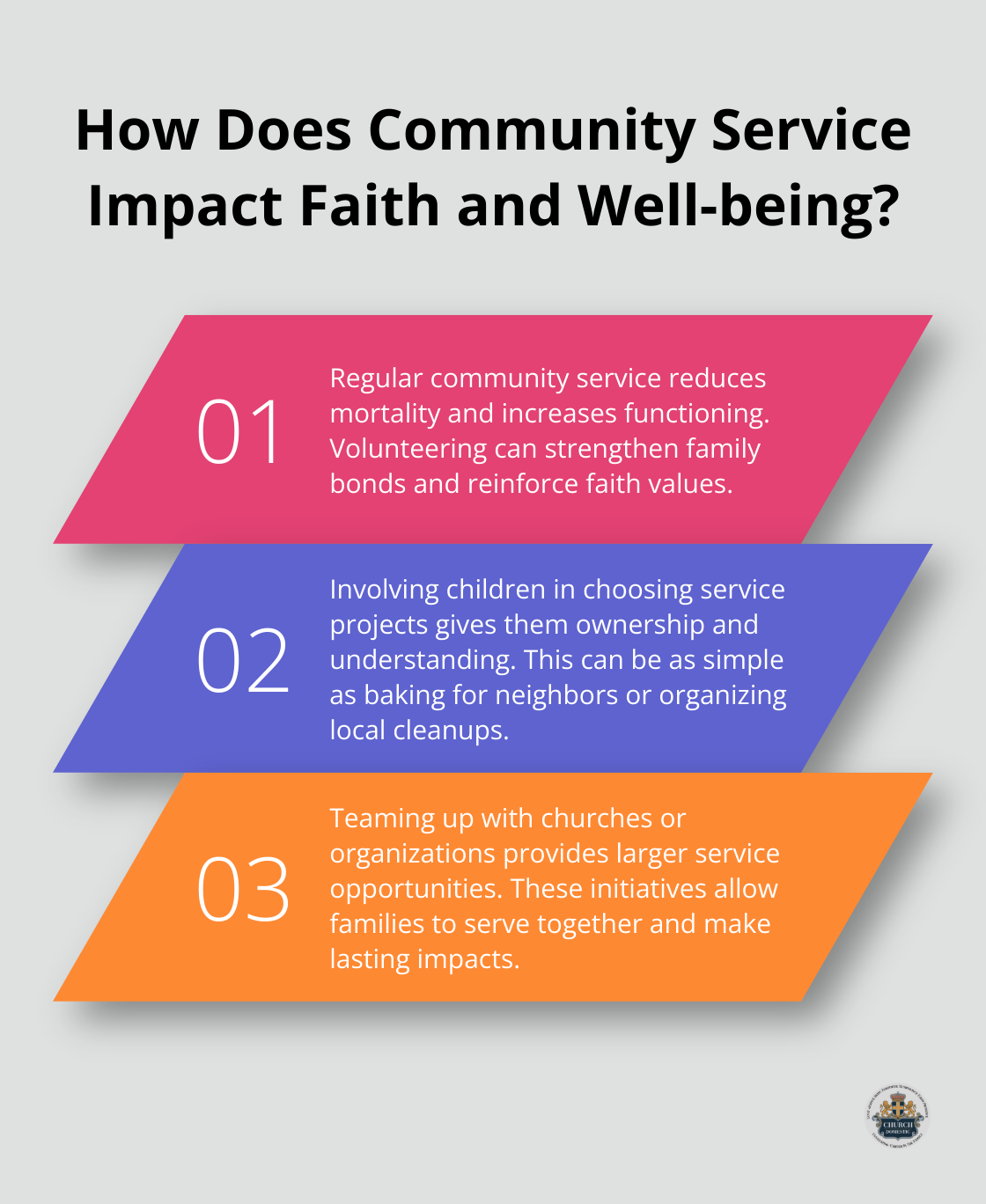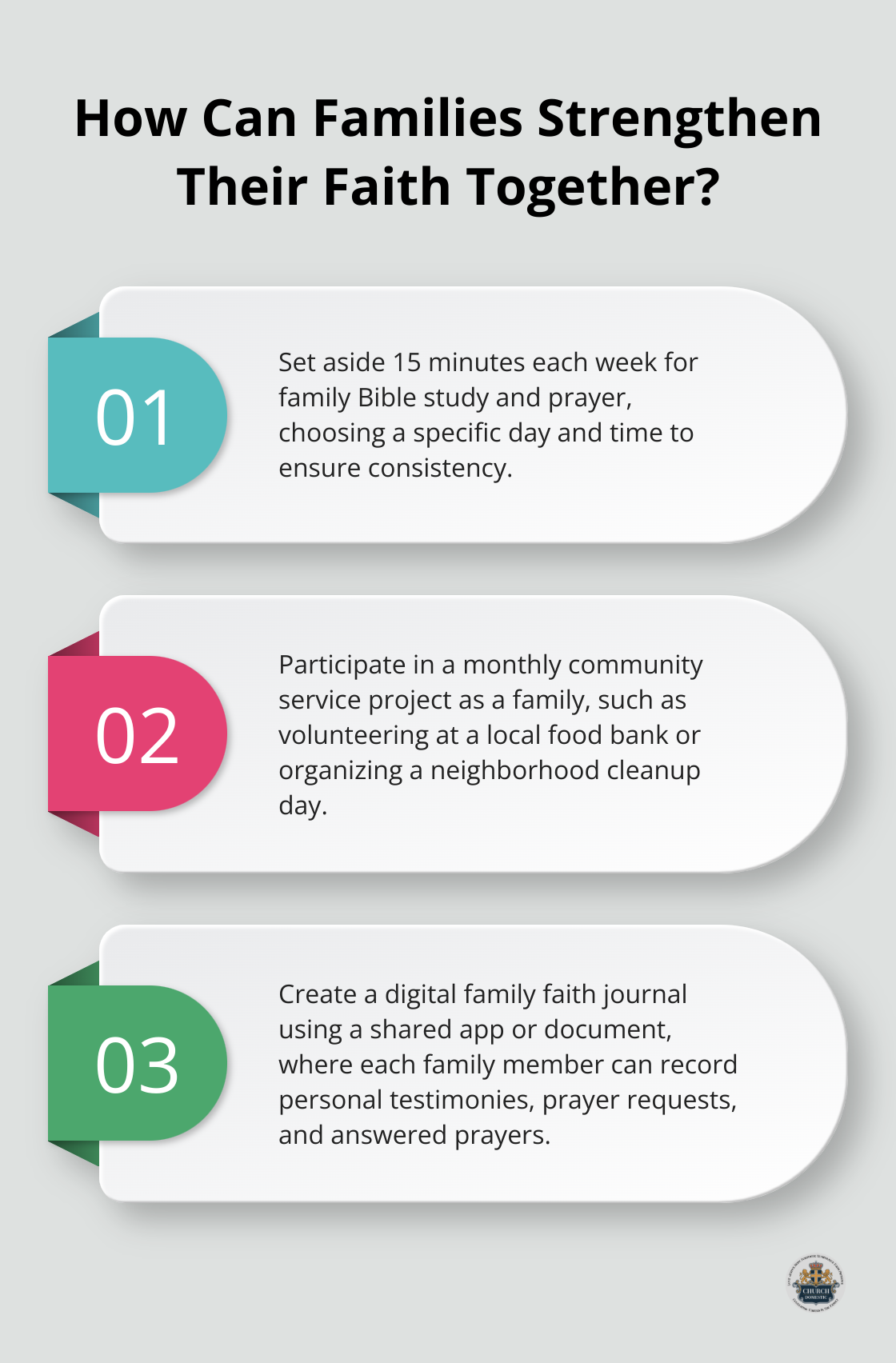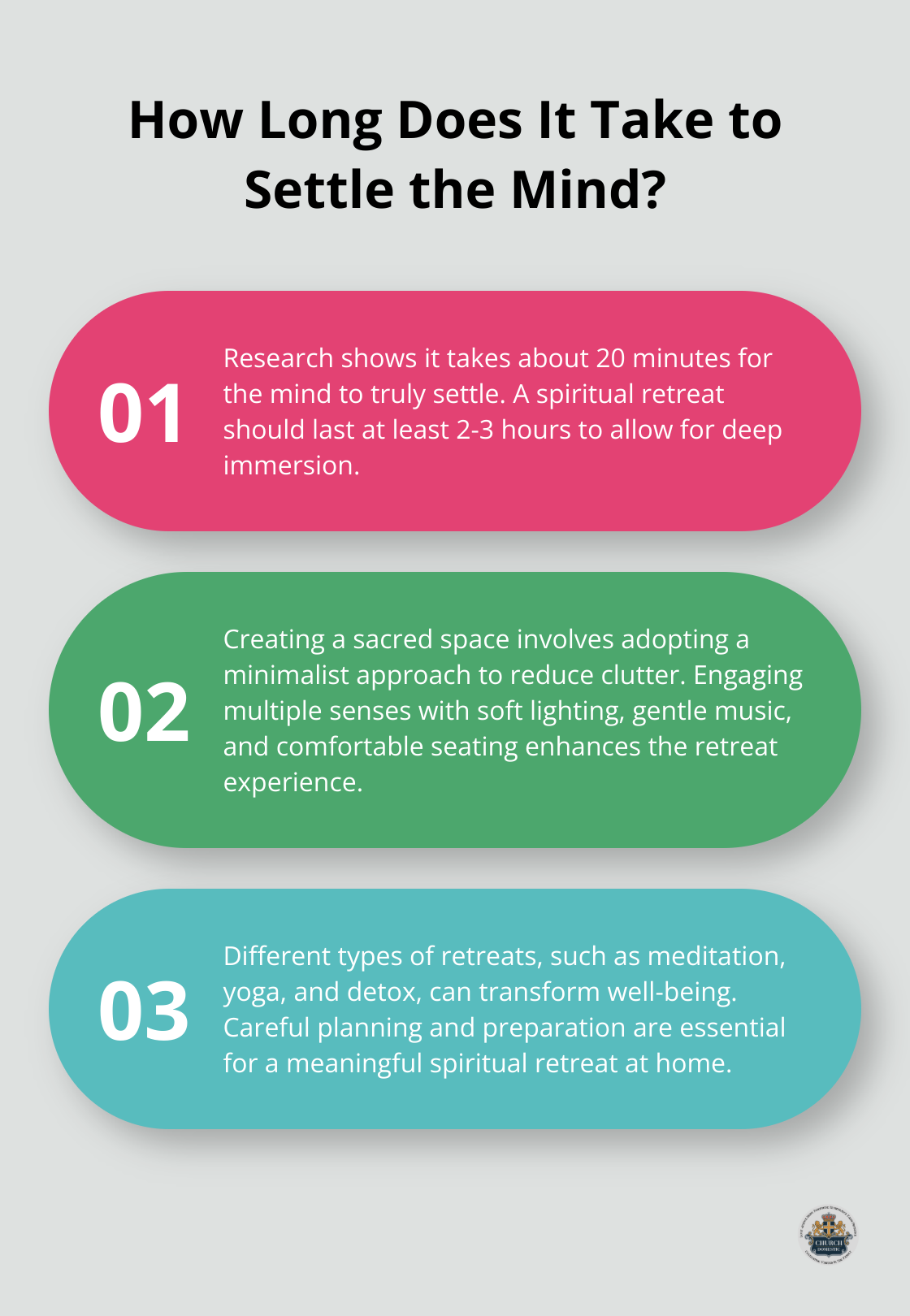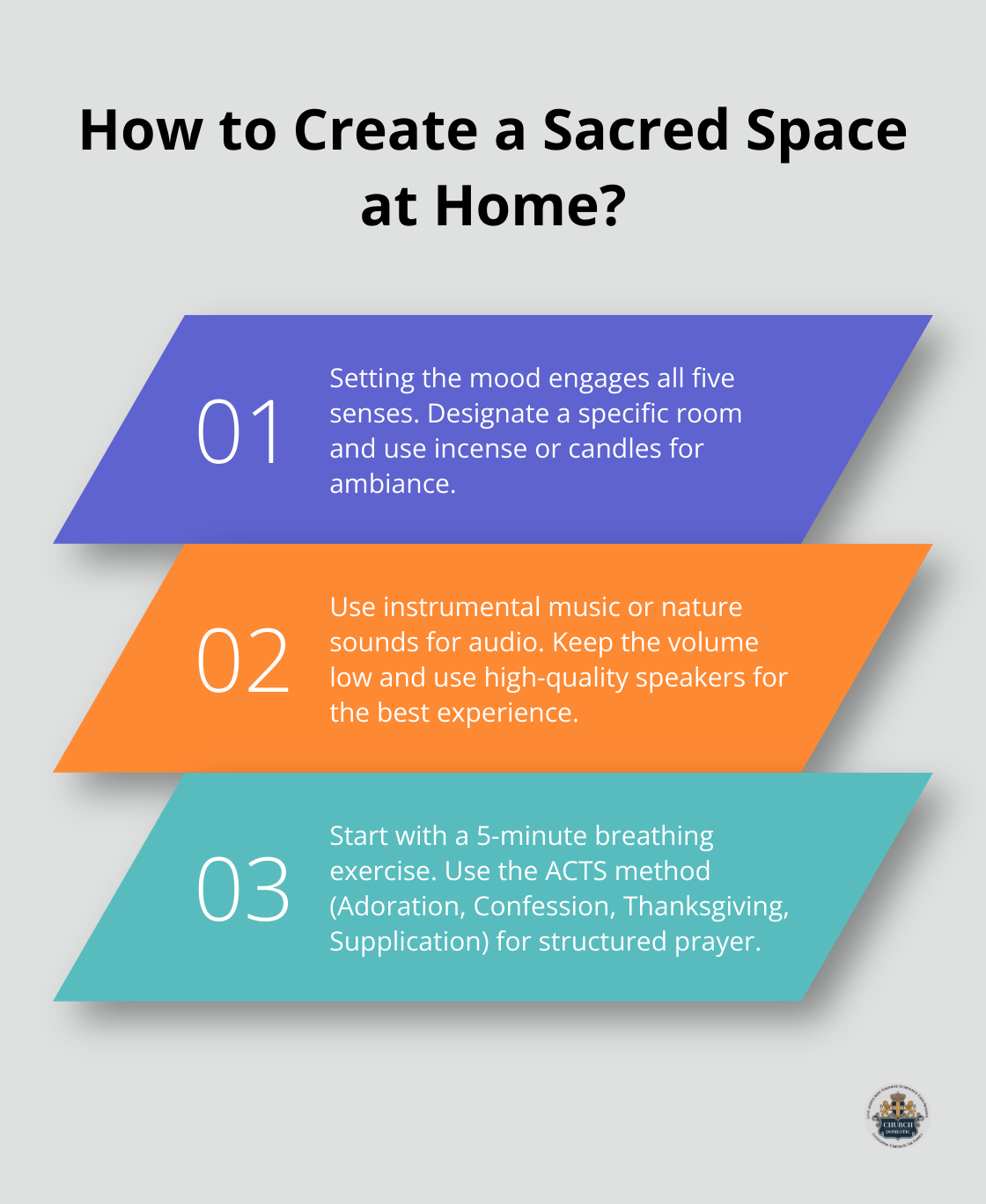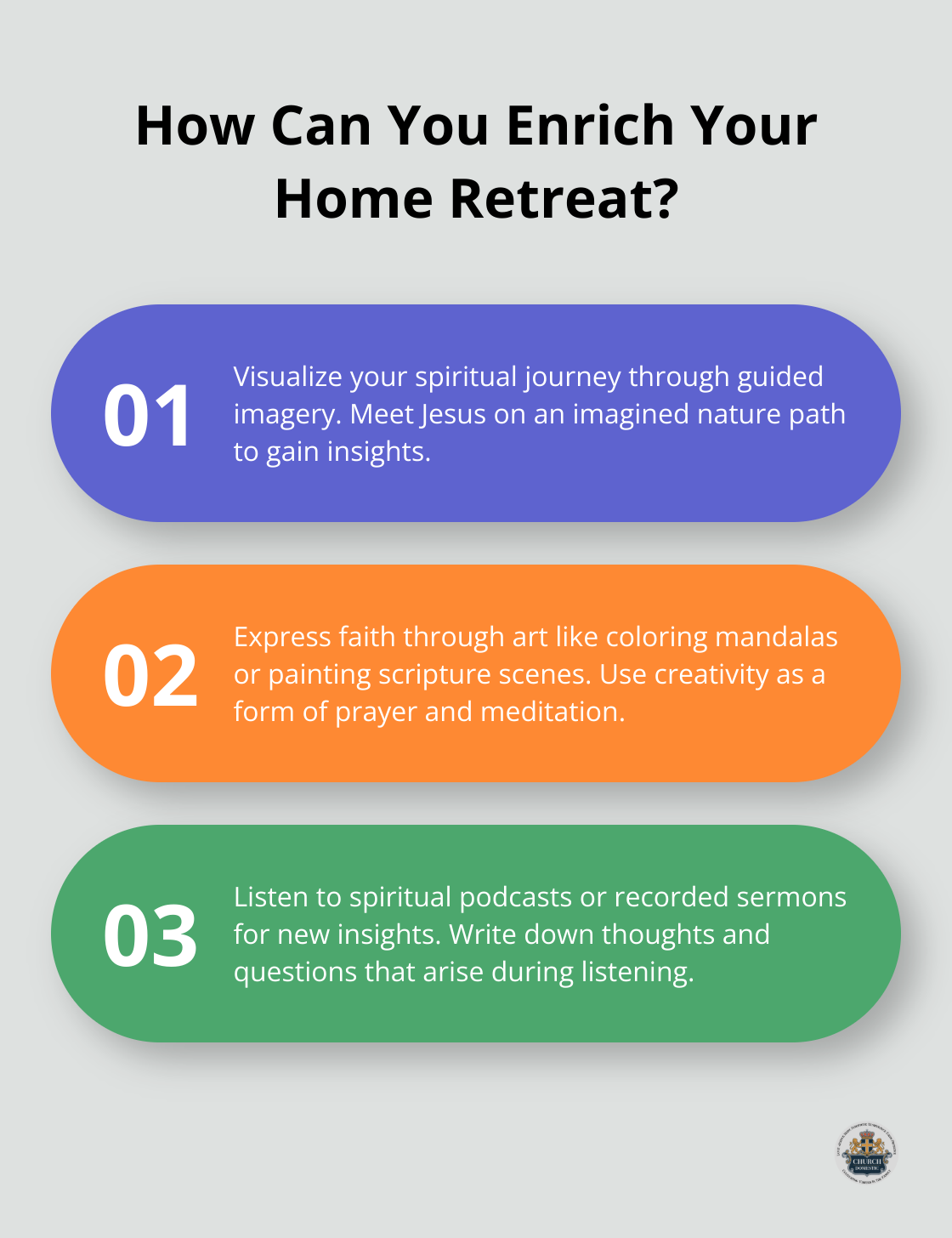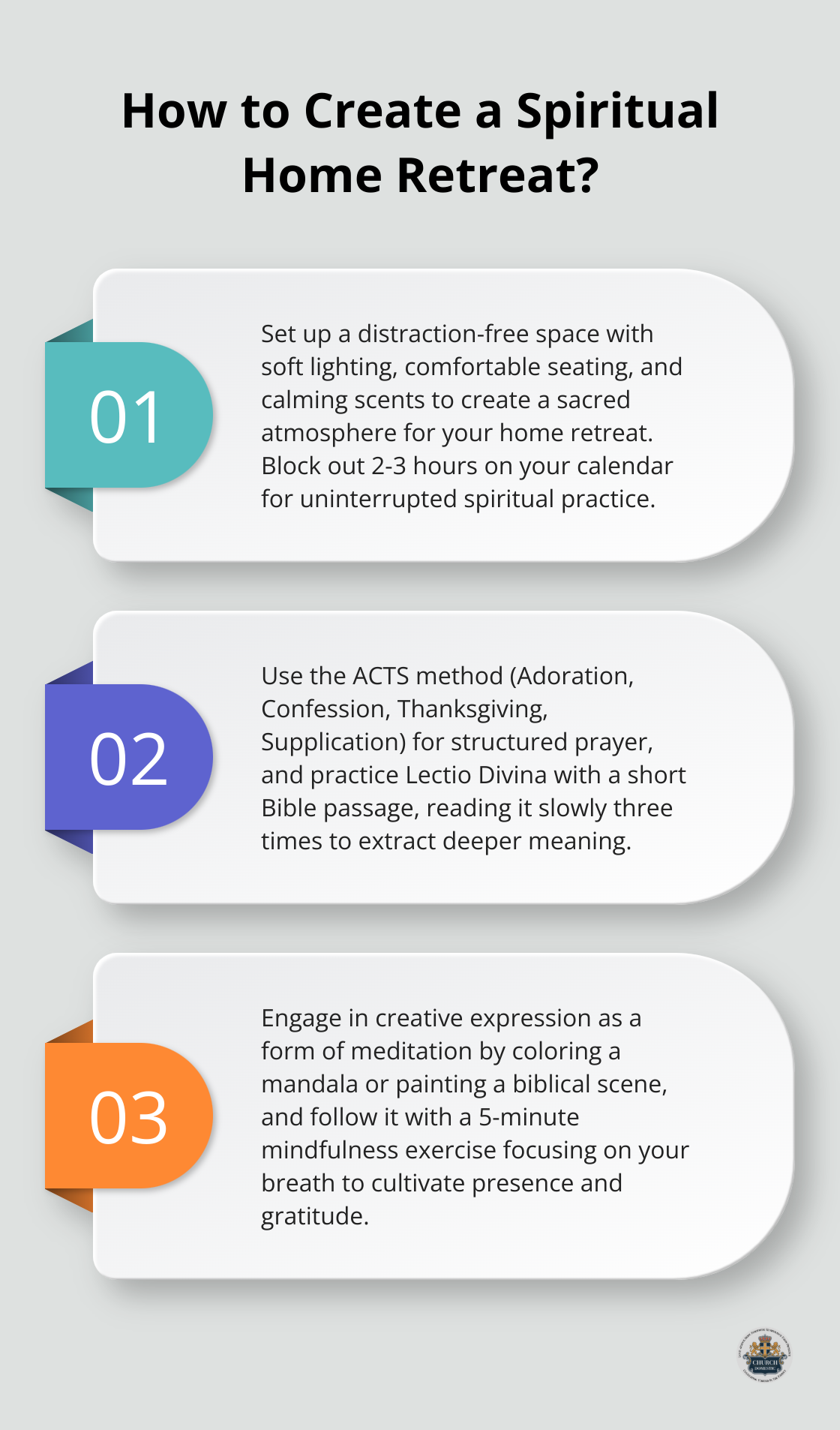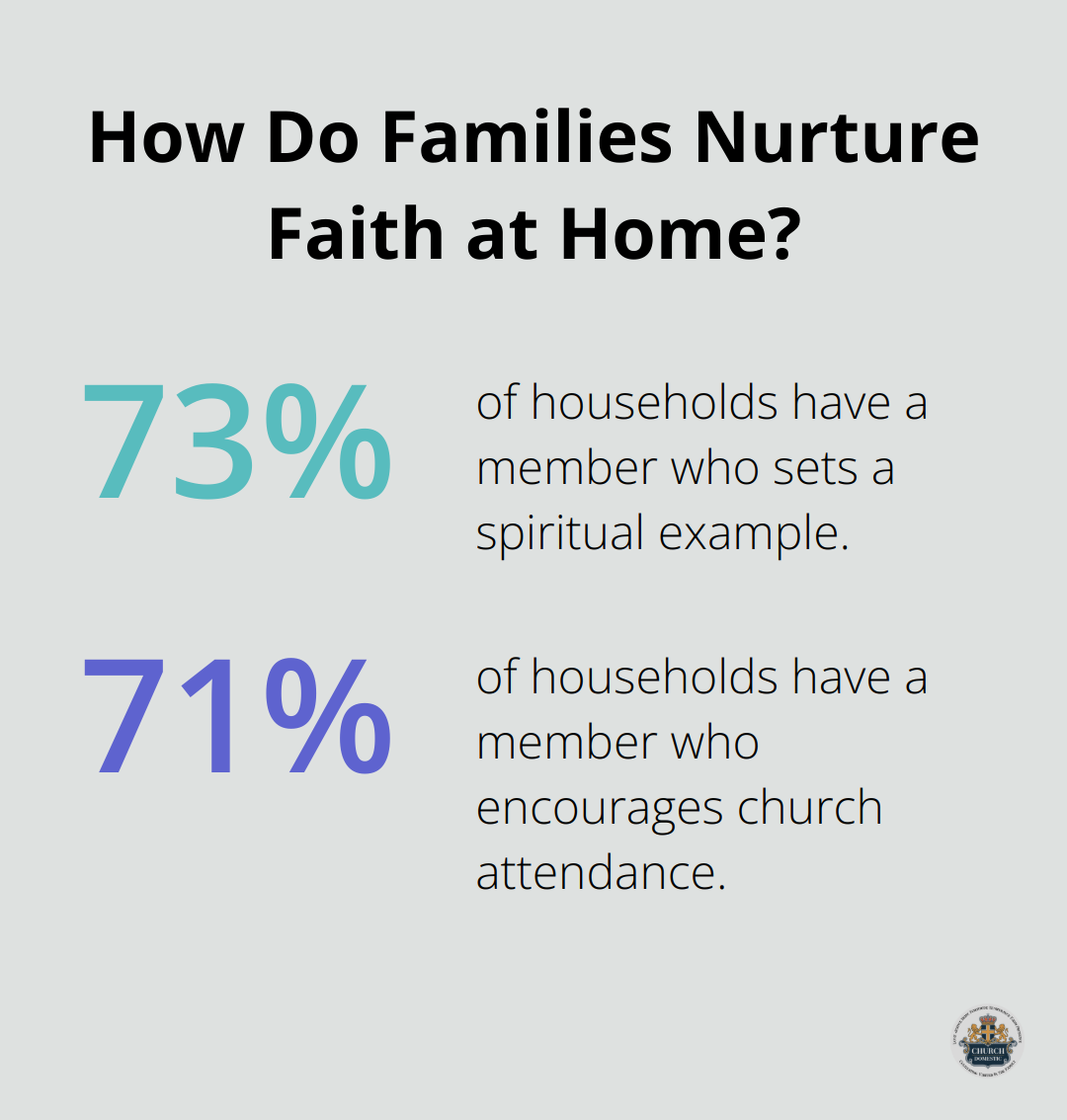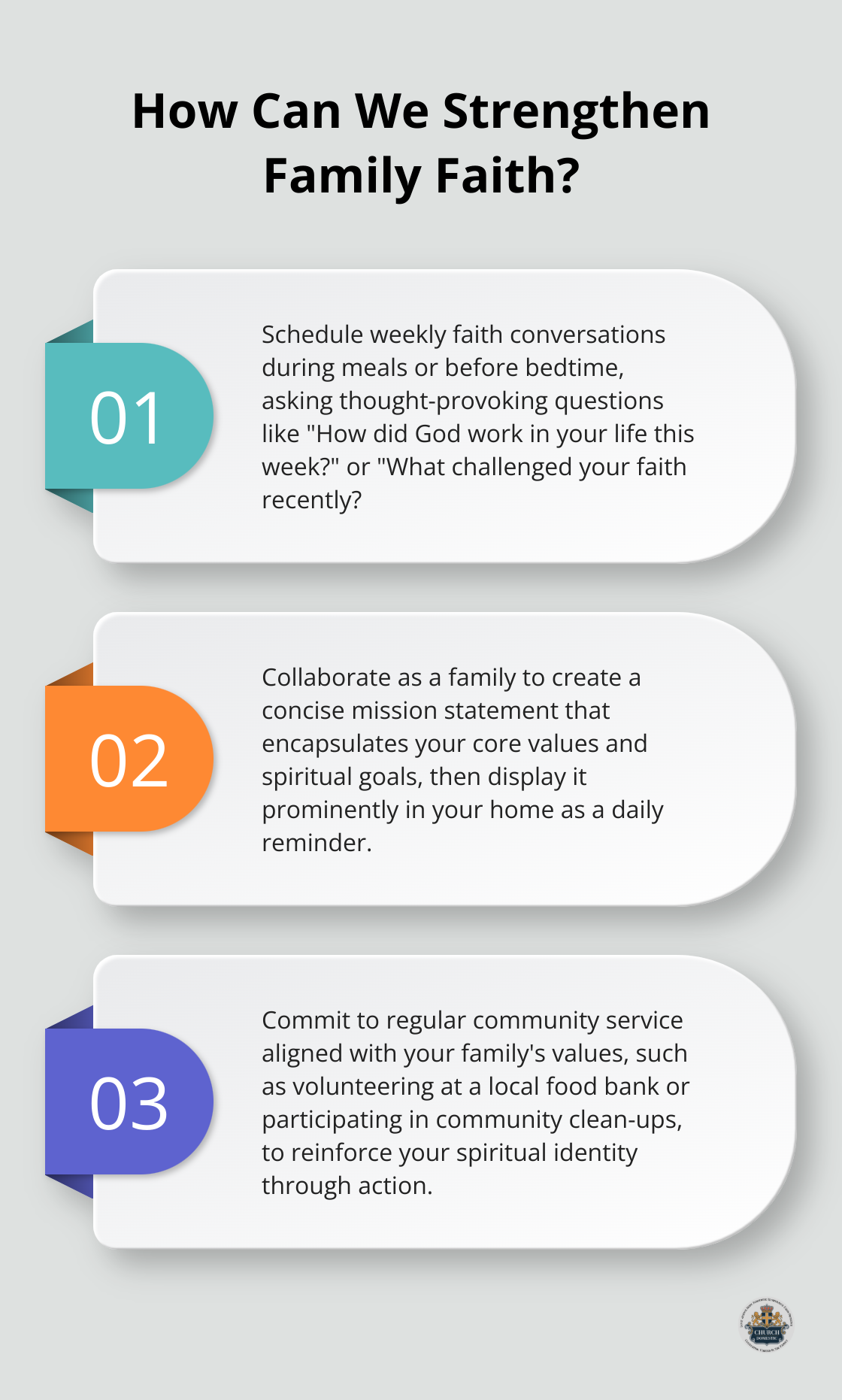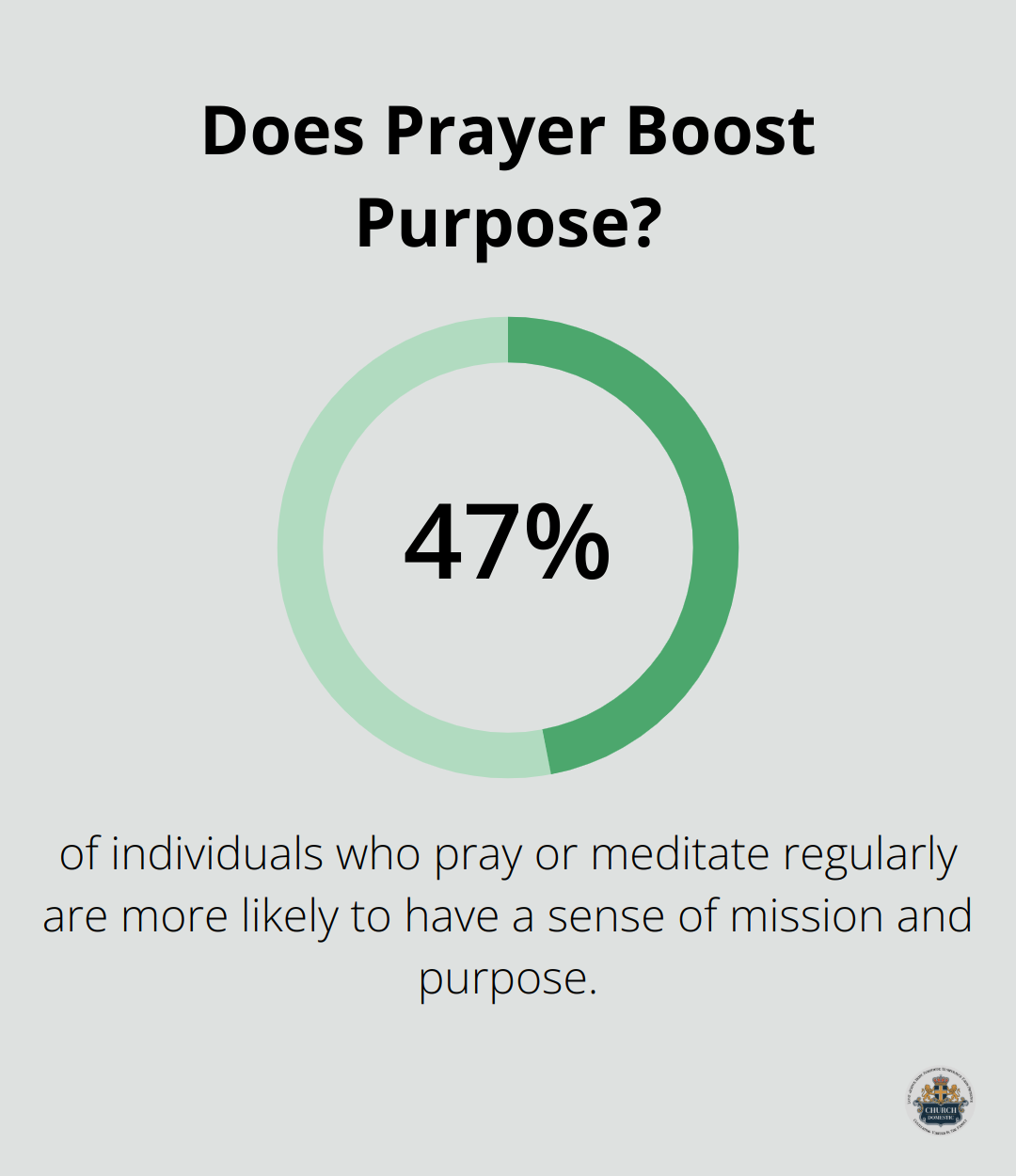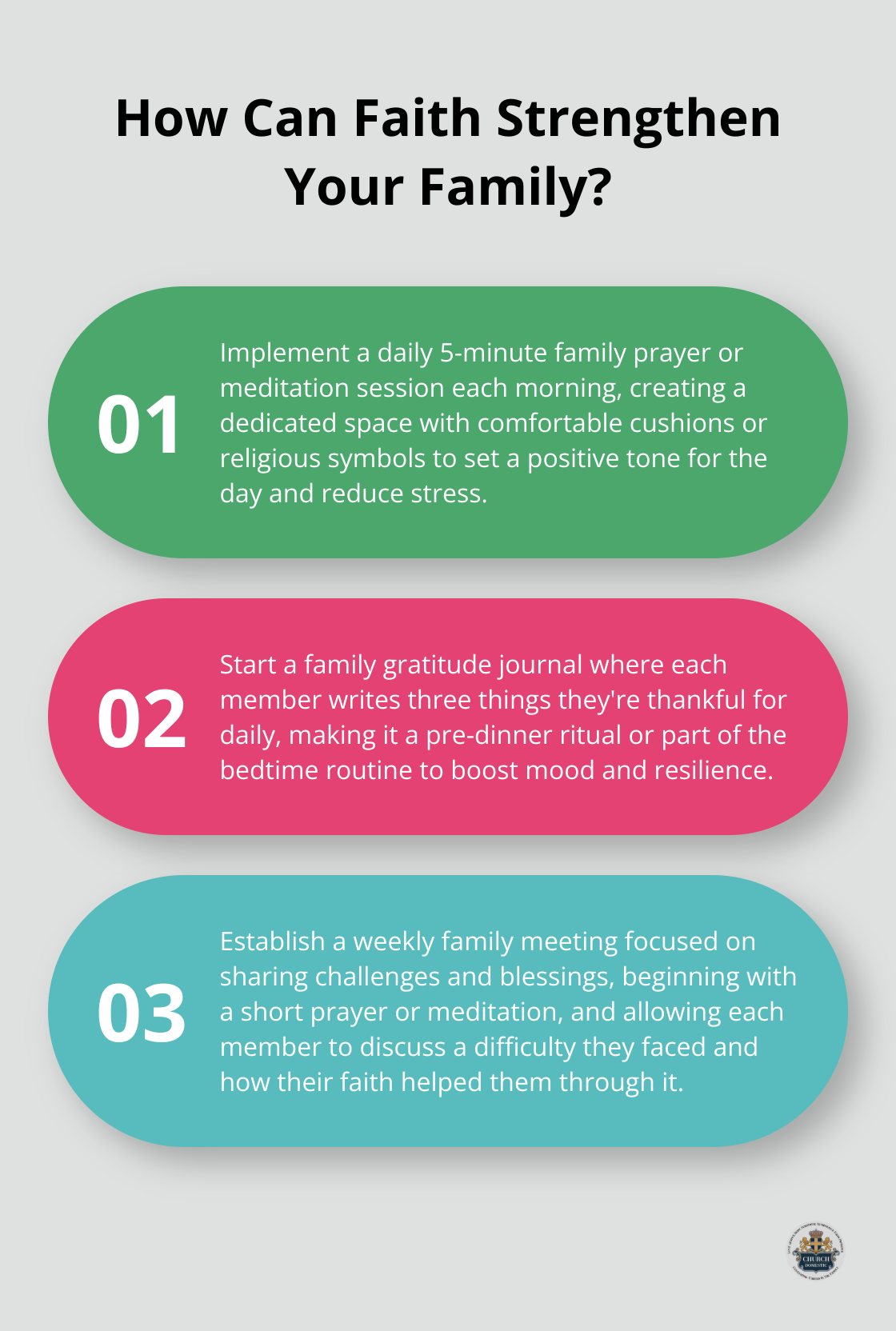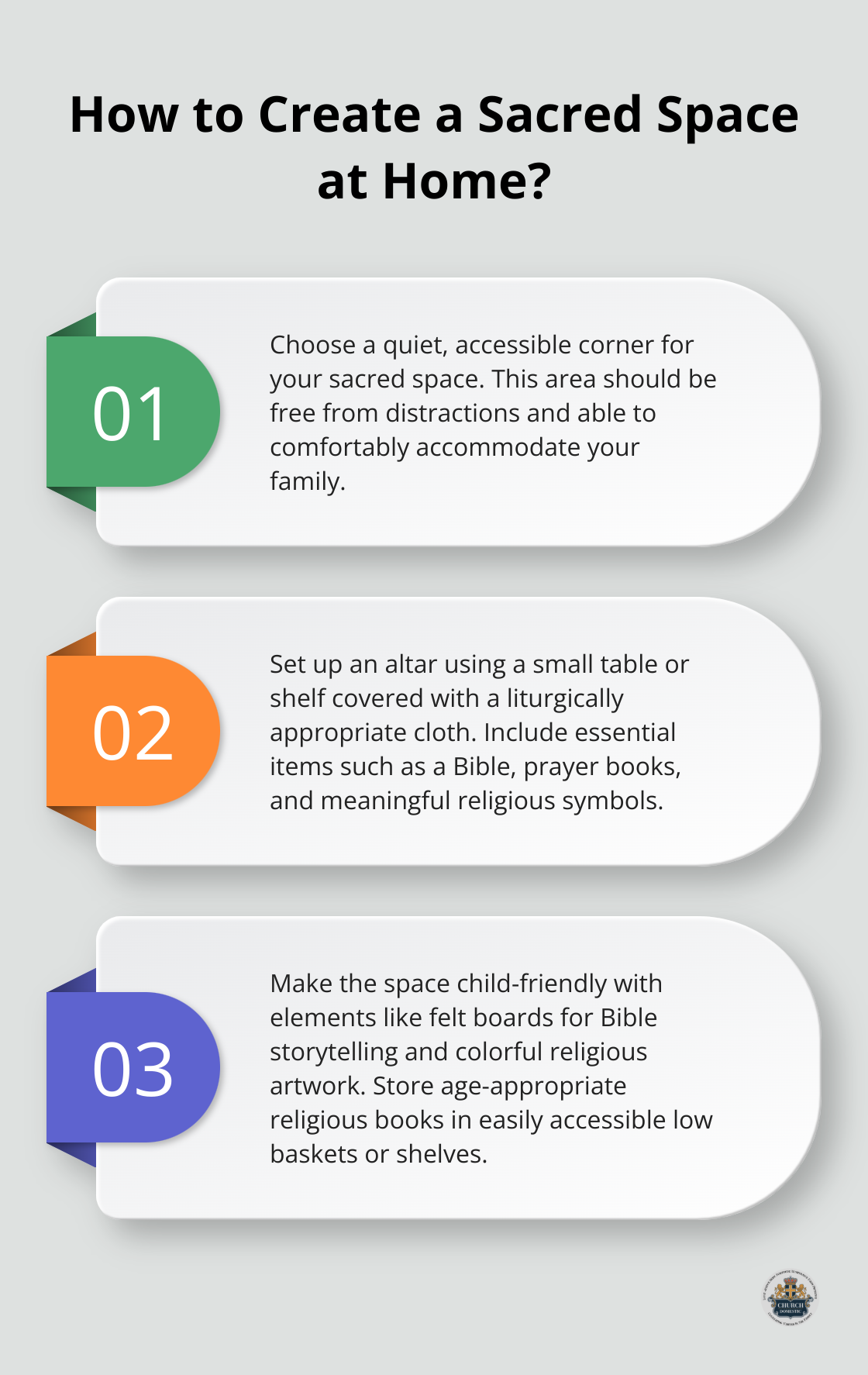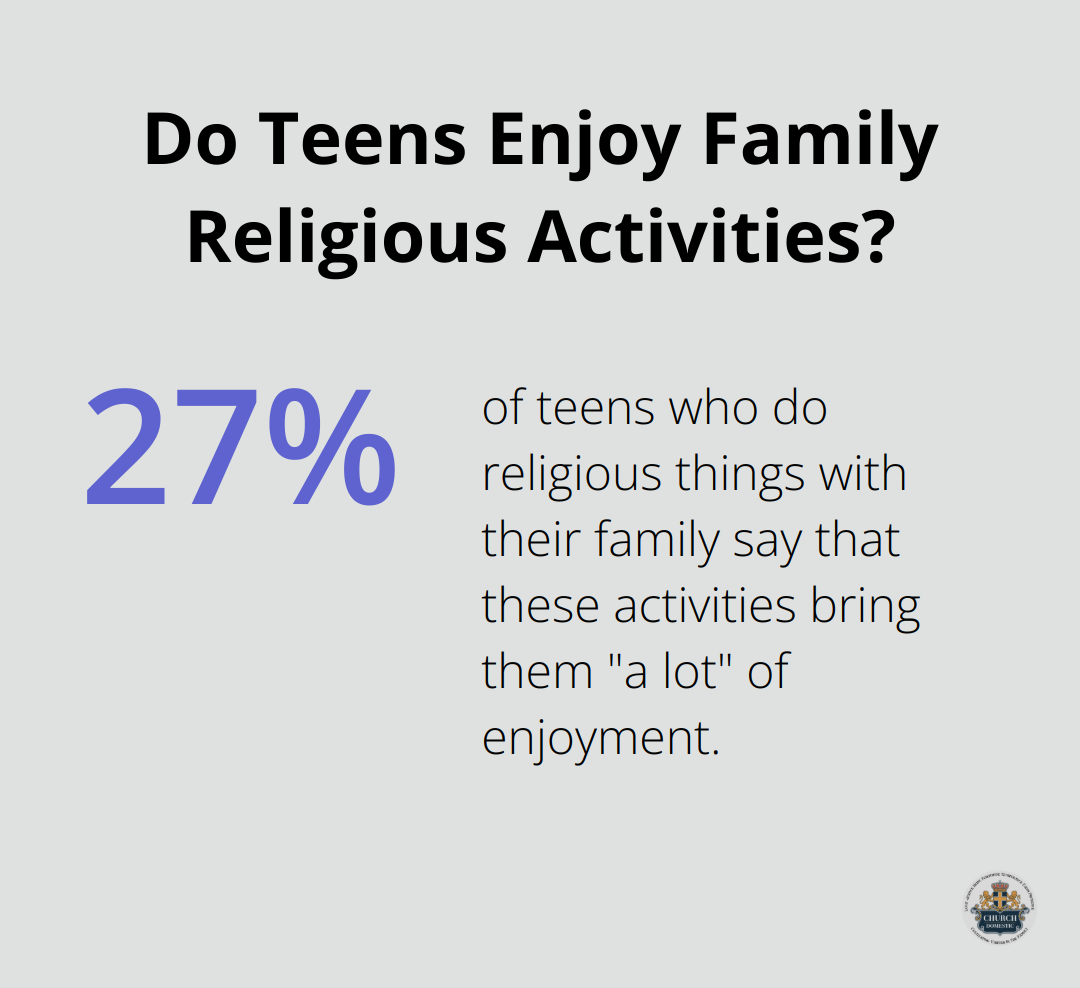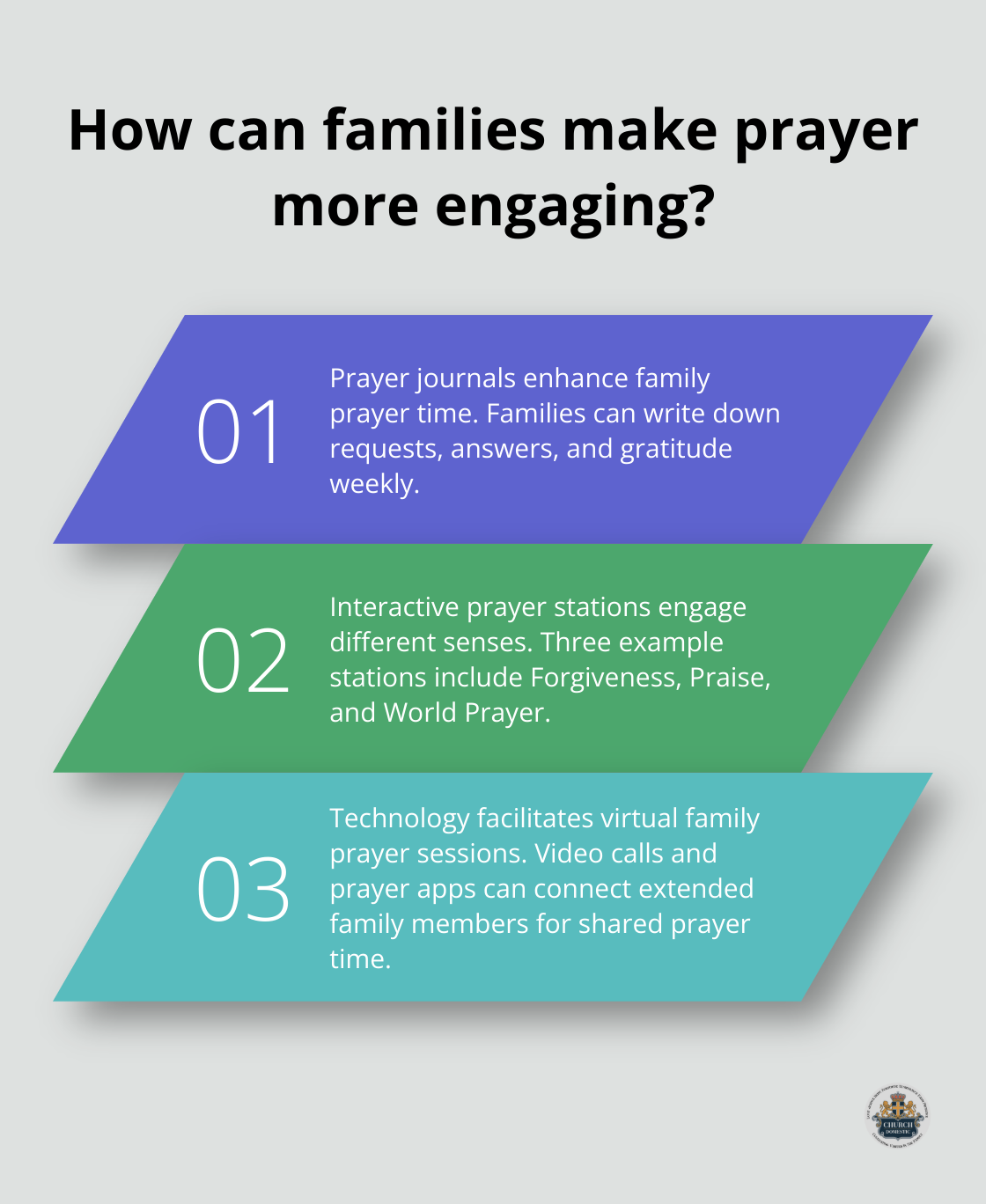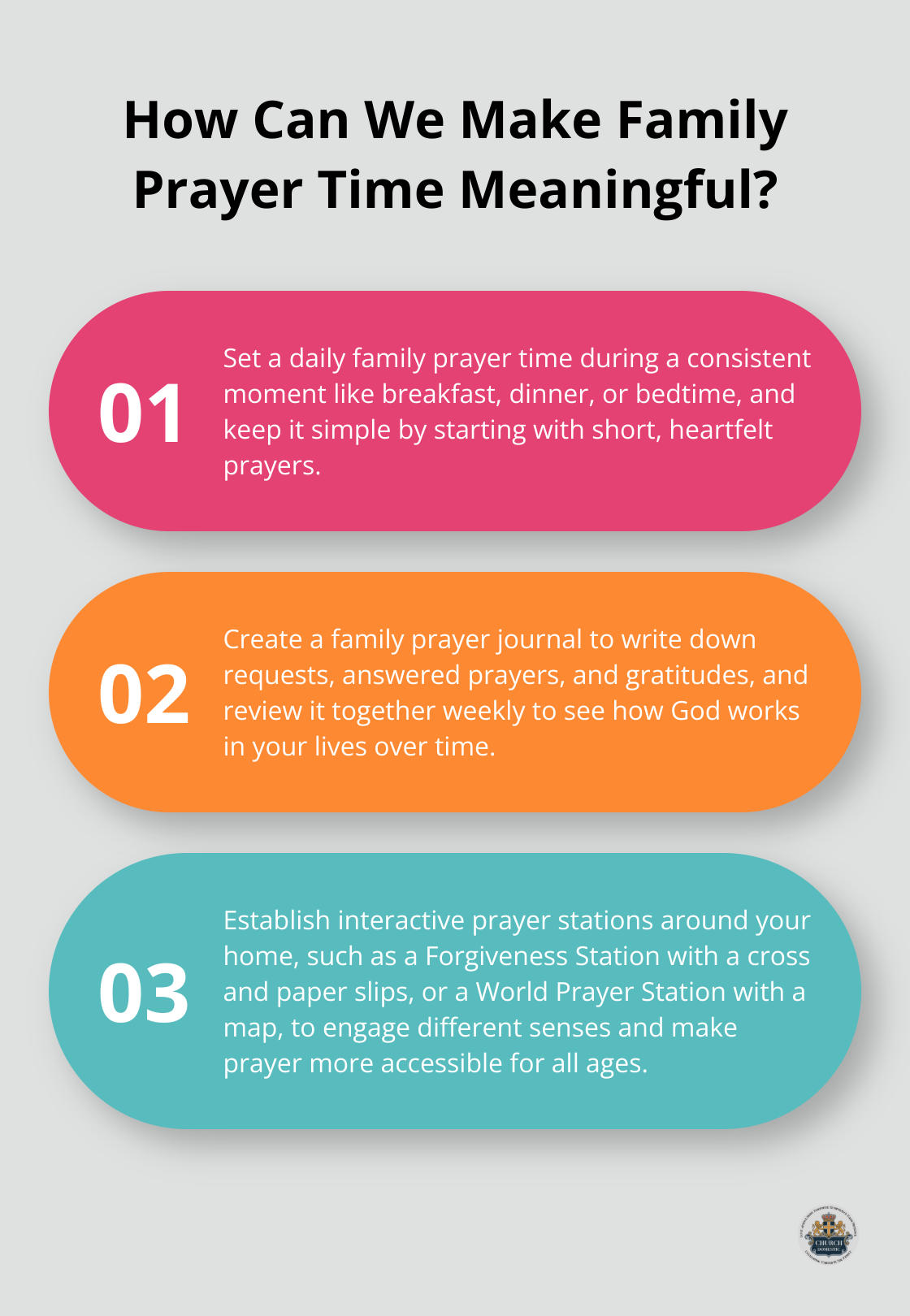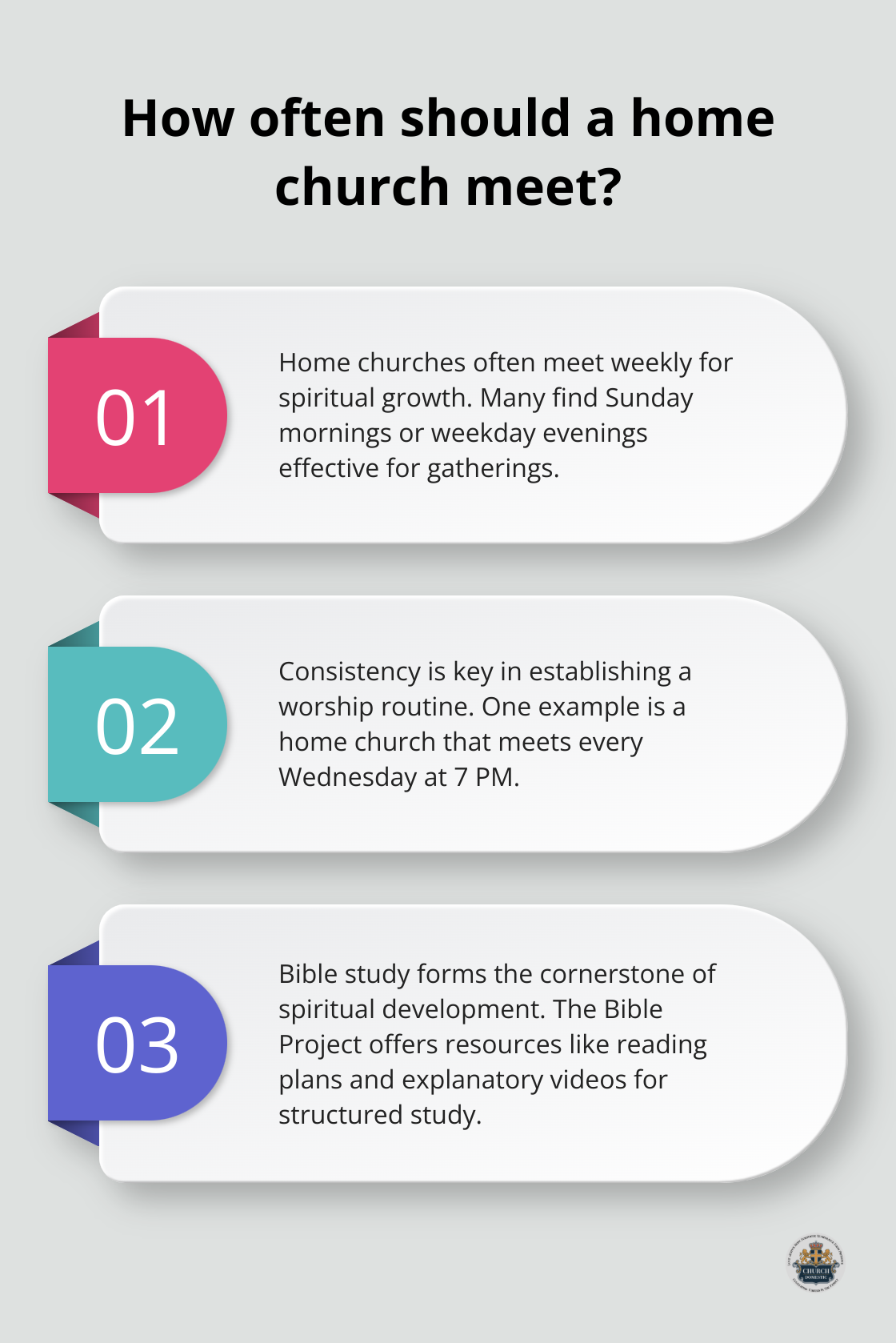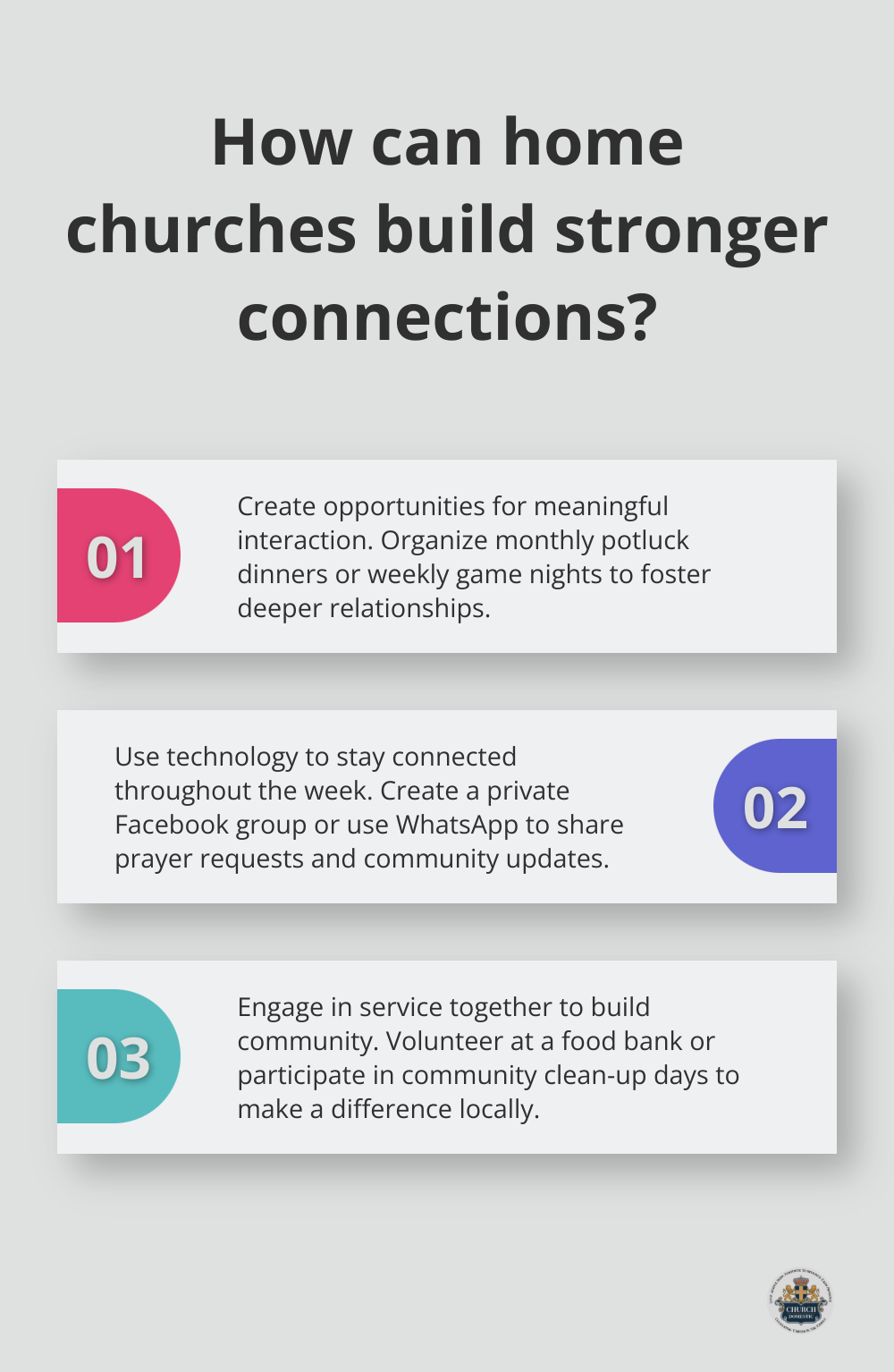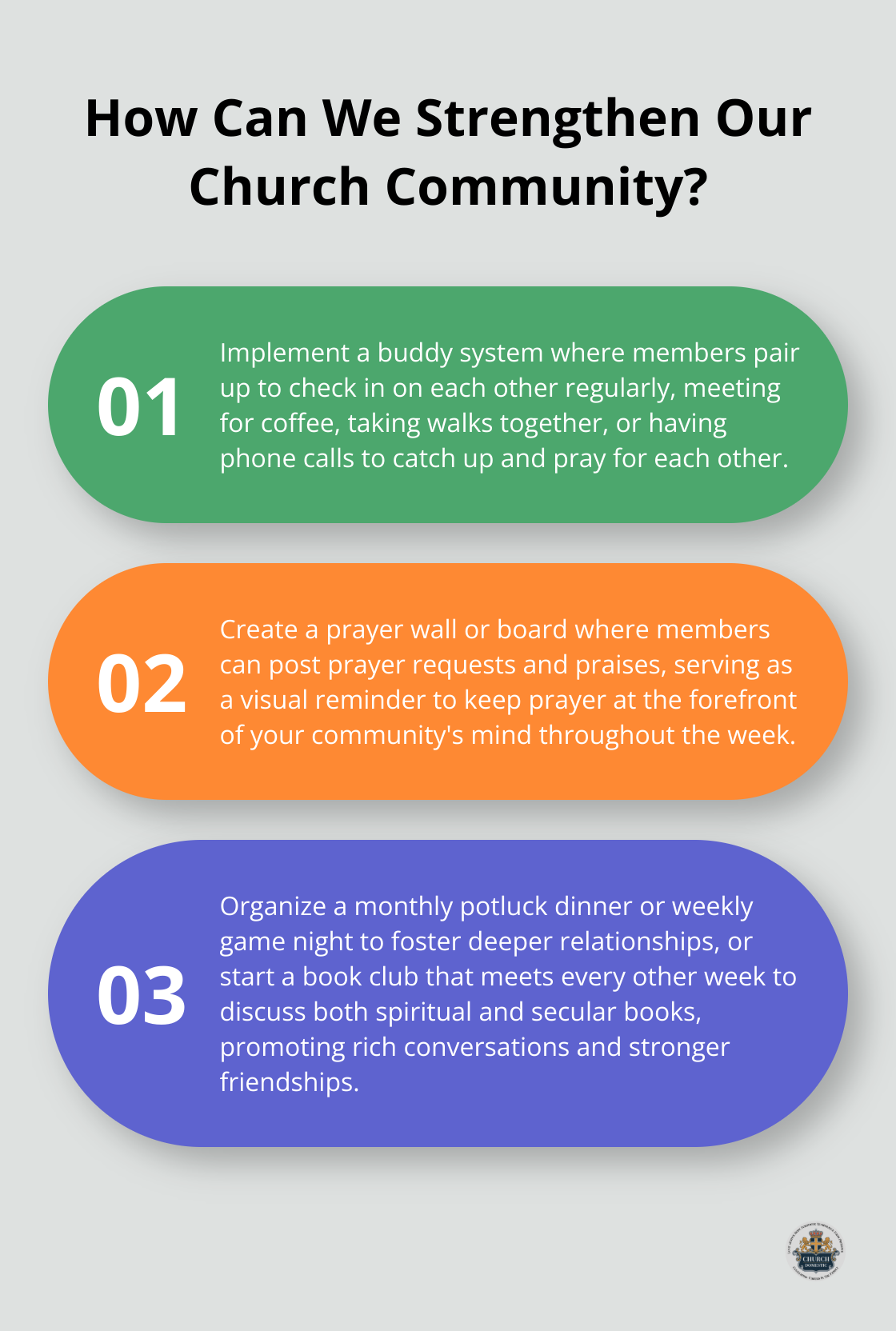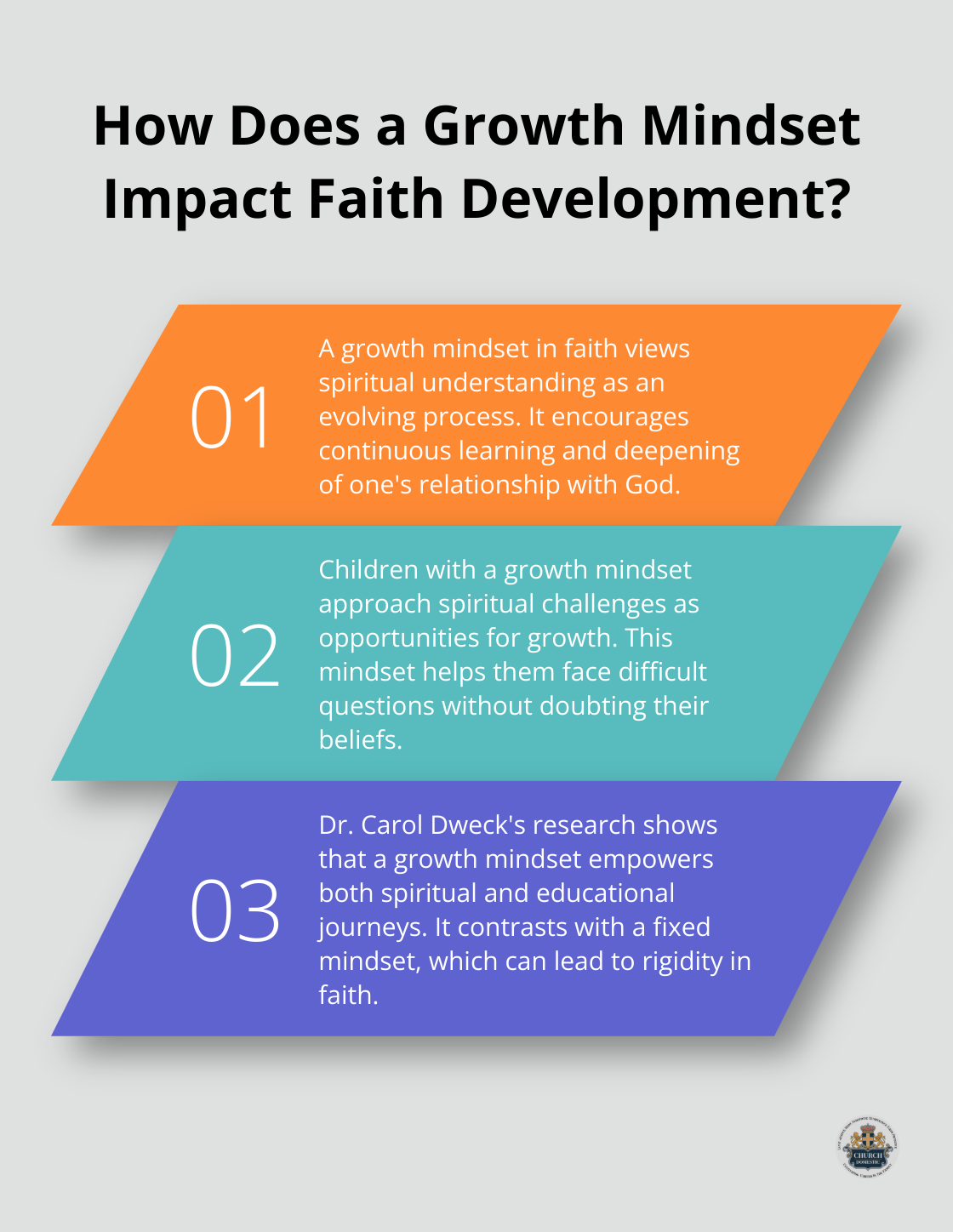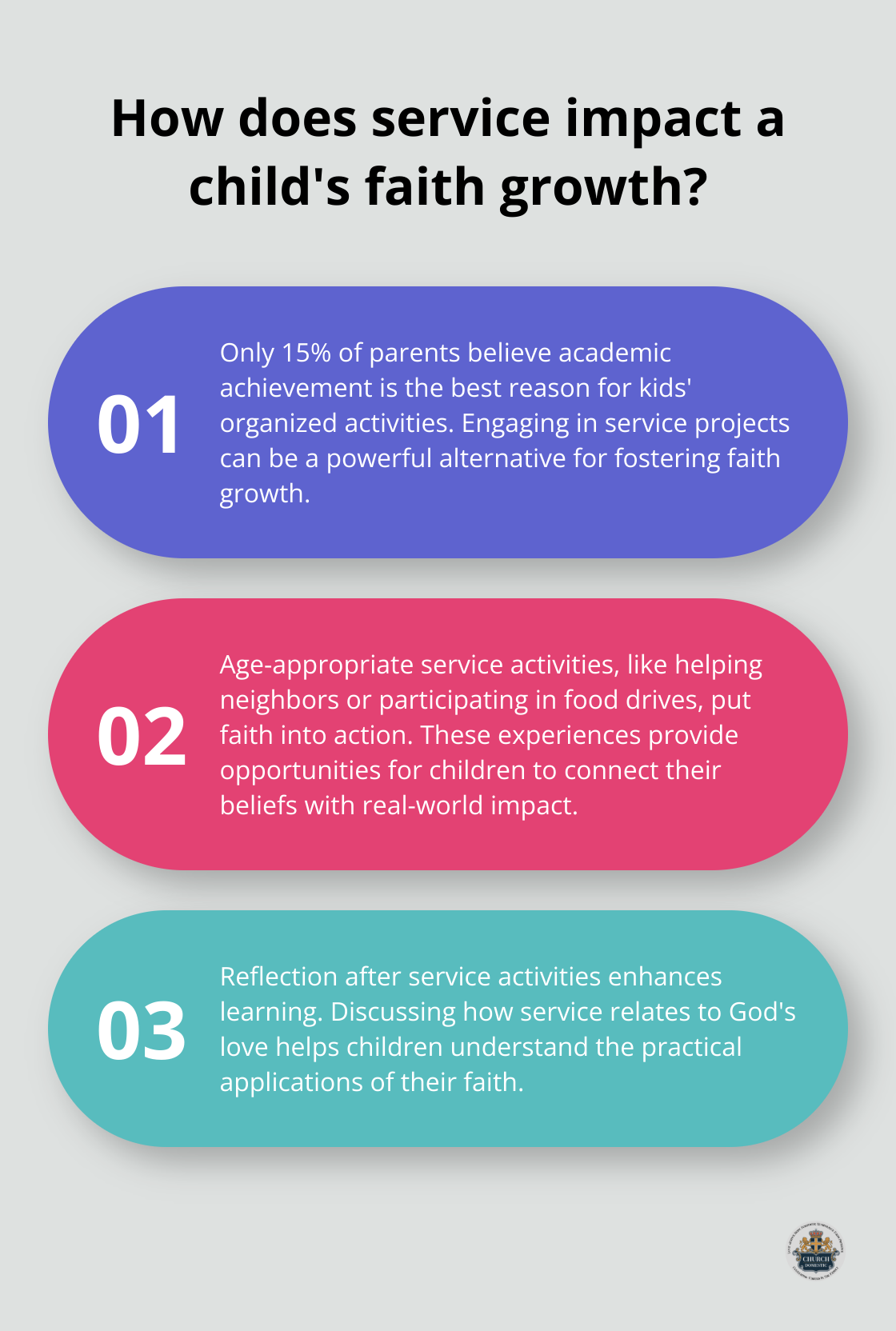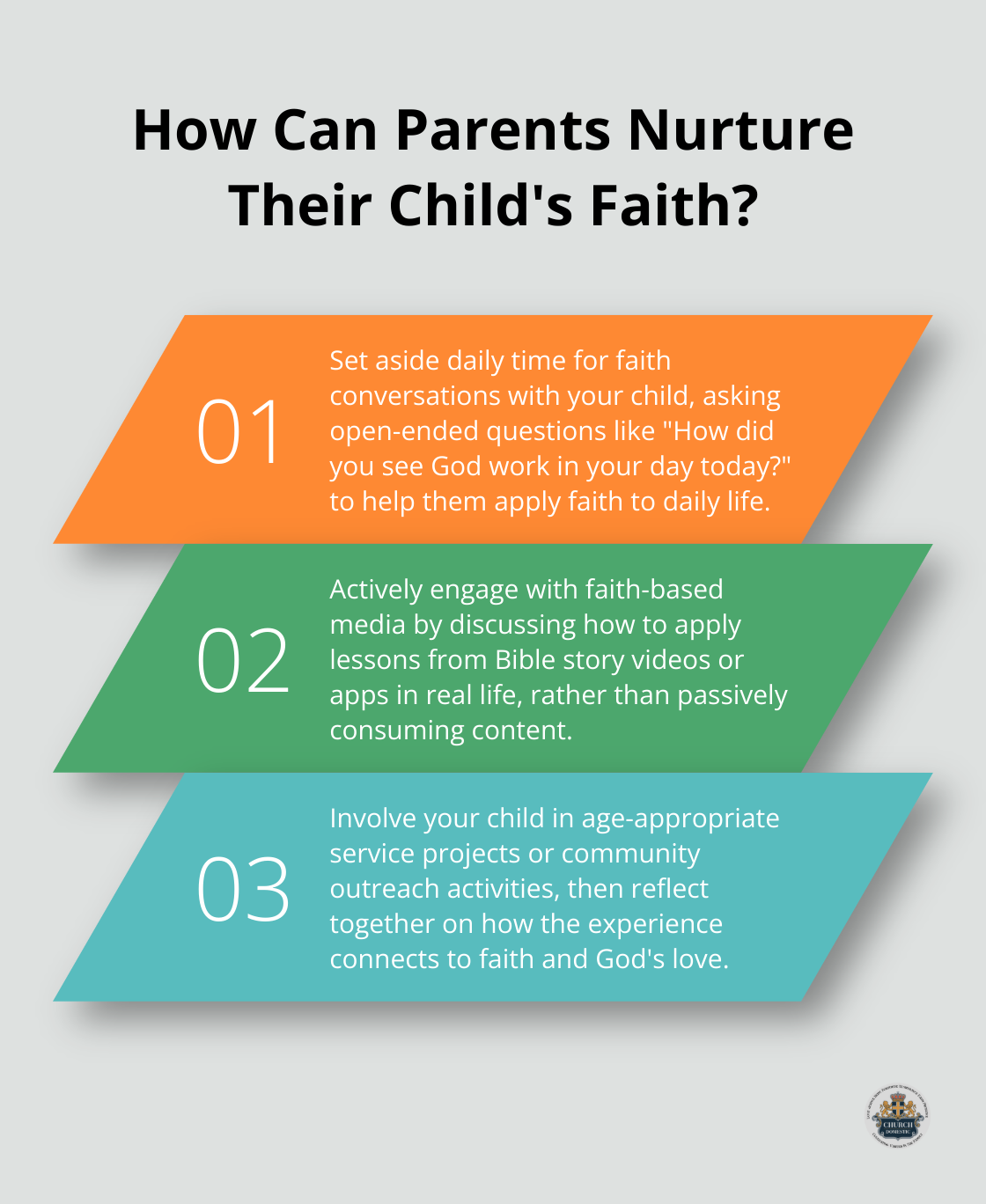At Church Domestic, we believe in the power of daily devotions to transform lives. Many people struggle to find time for lengthy spiritual practices in their busy schedules.
That’s why we’re excited to share the benefits of short, consistent family devotions. These brief moments of reflection can have a profound impact on your spiritual growth and family bonds.
How Consistency Fuels Spiritual Growth
At Church Domestic, we’ve witnessed the transformative power of daily devotions. Consistency in spiritual growth isn’t about grand gestures or lengthy sessions; it’s about showing up every day, even for just a few minutes.
The Compound Effect of Daily Practice
Spiritual growth resembles compound interest. Small, daily investments yield significant returns over time. A study by the American Bible Society revealed that people who engage with the Bible four or more times a week report lower stress levels and higher life satisfaction. This doesn’t require marathon Bible study sessions; it’s about regular, bite-sized engagement.
Overcoming the Inertia of Infrequency
Long, infrequent devotions often fall victim to the “out of sight, out of mind” phenomenon. Dr. James Clear, author of “Atomic Habits,” points out that habits must be obvious and easy to maintain. Short daily devotions fit this bill perfectly. They slot easily into your routine, whether with your morning coffee or just before bed.
From Knowledge to Understanding
Regular practice leads to deeper understanding. It’s not just about accumulating facts; it’s about absorbing wisdom. The Barna Group reports that frequent Bible readers are more likely to see its impact on their lives. This makes sense – when you engage with spiritual content daily, you apply it more readily to your everyday experiences.
Creating a Ripple Effect
Consistency in spiritual practices doesn’t just affect you; it influences your entire household. The National Study of Youth and Religion found that parents who regularly discuss faith at home have children who are more likely to maintain their faith into adulthood. Your daily devotion habit can create a positive spiritual atmosphere for your whole family.

We encourage families to start small (even five minutes a day can make a difference). Use a devotional app, read a short passage, or simply pray together. The key is consistency, not duration. Over time, you’ll likely find yourself naturally extending these moments of connection.
As we explore the benefits of brief, daily devotions in the next section, you’ll discover how these short spiritual practices can fit seamlessly into your busy life and yield profound results.
Benefits of Brief, Daily Devotions
Seamless Integration into Busy Lives
Modern life moves at a breakneck pace, often leaving little room for spiritual growth. Short devotions offer a solution to this time crunch. The Barna Group reports that 61% of Christians who don’t read the Bible cite lack of time as the primary obstacle. Brief devotions eliminate this barrier.
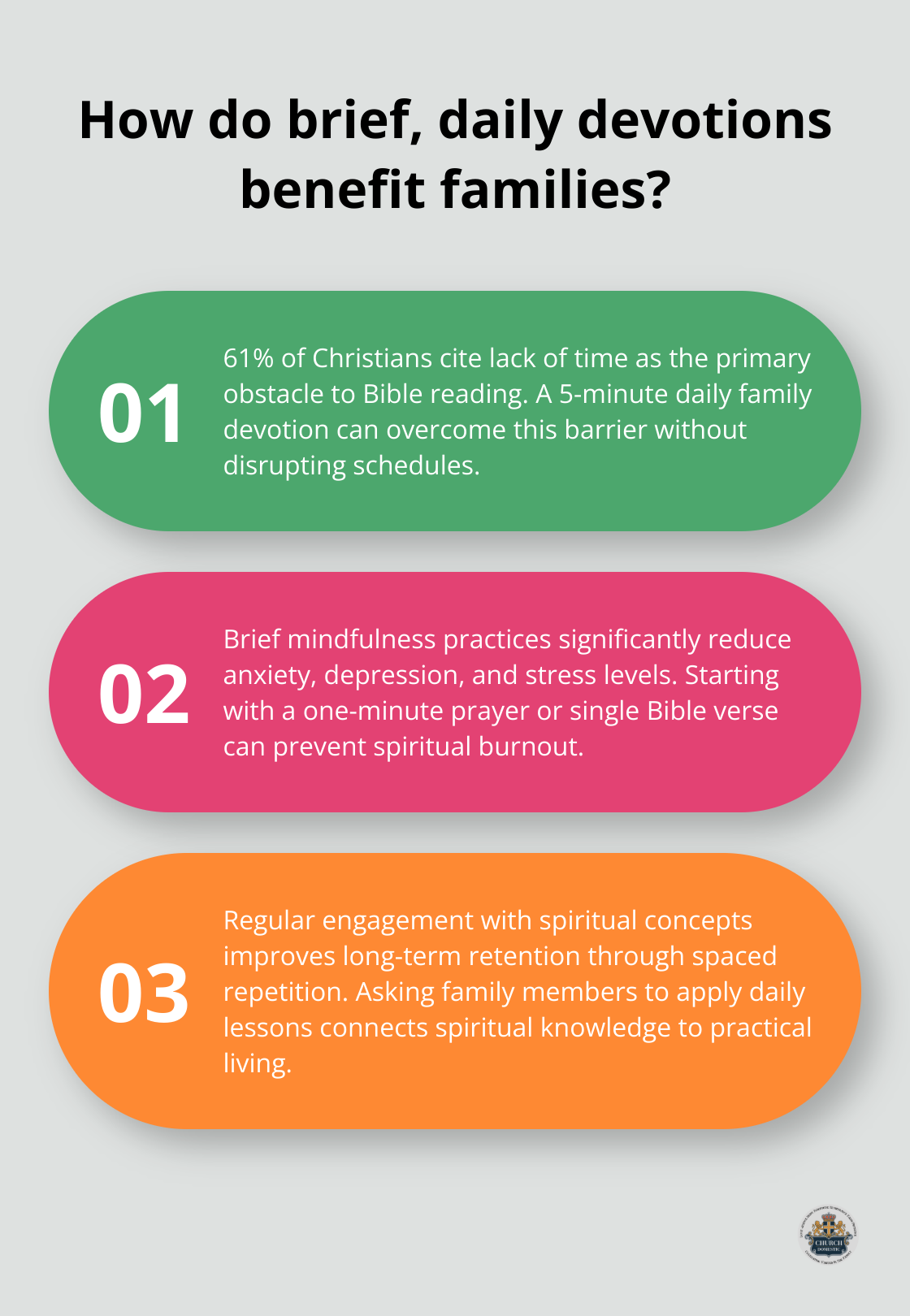
A practical approach: Set a daily alarm for a 5-minute family devotion. Choose a consistent time-breakfast, bedtime, or even the car ride to school. This small commitment yields significant results without disrupting your schedule.
Stress Reduction Through Bite-Sized Spirituality
Long, infrequent spiritual sessions can overwhelm, especially for children or new believers. Short devotions provide a digestible and less daunting alternative. Brief mindfulness practices significantly reduce anxiety, depression, psychological distress, and stress levels.
A helpful tip: Begin with a one-minute prayer or a single Bible verse each day. Increase the duration gradually as your family acclimates. This approach prevents spiritual burnout and maintains engagement.
Enhanced Retention and Real-Life Application
Neuroscience supports the effectiveness of spaced repetition-reviewing information at increasing intervals improves long-term retention. This principle applies perfectly to daily devotions. Regular engagement with spiritual concepts increases the likelihood of remembering and applying them in daily life.
Try this exercise: After each devotion, ask family members to share one way they will apply the lesson that day. This practice connects spiritual knowledge to practical living.
Fostering Family Unity
Short, daily devotions create a shared spiritual experience for the entire family. This regular practice fosters open communication about faith and values. A study by the National Study of Youth and Religion found that children whose parents discuss faith at home are more likely to maintain their beliefs into adulthood.
Suggestion: Rotate leadership of the devotion among family members (even young children). This involvement increases engagement and ownership of the family’s spiritual journey.
Cultivating Consistency in Faith
Brief, daily devotions establish a rhythm of spiritual engagement. This consistency builds a strong foundation for faith growth. The American Bible Society’s research shows that people who engage with the Bible four or more times a week report lower stress levels and higher life satisfaction.
A simple start: Choose a devotional app or book that offers short, daily readings. Commit to this practice for 30 days and observe the positive changes in your family’s spiritual life.
As we explore strategies to overcome common challenges in maintaining this valuable practice, you’ll discover how to make short, daily devotions a sustainable part of your family routine.
Making the Most of Brief Devotions
Create a Distraction-Free Zone
Designate a specific area in your home for devotions. A study by the University of California found that it takes an average of 23 minutes to refocus after an interruption. To combat this, silence phones and choose a quiet spot away from TVs and computers. This physical separation signals to your brain that it’s time to focus on spiritual matters.
Use the Power of Routine
Anchor your devotion time to an existing habit. Instead of adding a new activity to your already packed schedule, integrate your tiny habit into an existing routine. This association makes the new habit more likely to stick.
Engage Multiple Senses
Incorporate various sensory elements to deepen your experience. Light a candle, play soft background music, or use a physical Bible instead of a digital version. A study in the Journal of Environmental Psychology found that multisensory environments enhance focus and memory retention.
Practice Active Engagement
Don’t just read; interact with the content. Write down key verses, journal your thoughts, or discuss the devotion with family members. The American Psychological Association reports that active learning techniques improve comprehension and retention by up to 50%.
Use Technology Wisely
Leverage apps and online resources for quick, meaningful devotions. The YouVersion Bible app offers thousands of devotional plans (many under five minutes long). However, be cautious of digital distractions. A study by the University of Texas found that the mere presence of a smartphone can reduce cognitive capacity.
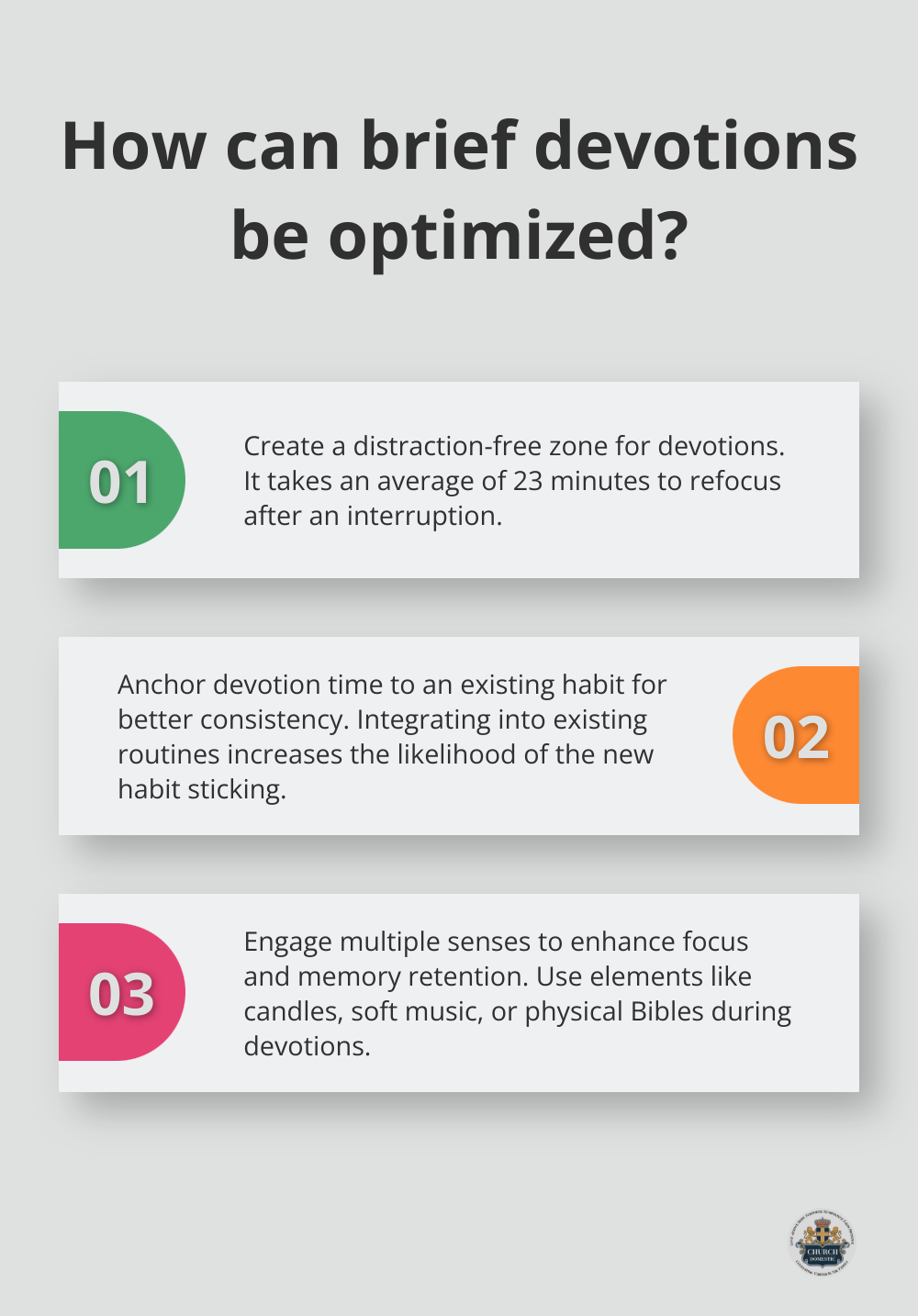
Final Thoughts
Short, daily devotions provide a powerful path to spiritual growth that fits into busy lives. These brief moments of reflection reduce stress, enhance retention of spiritual truths, and foster family unity. Family devotions create a sustainable habit that builds a strong foundation for long-term faith development.
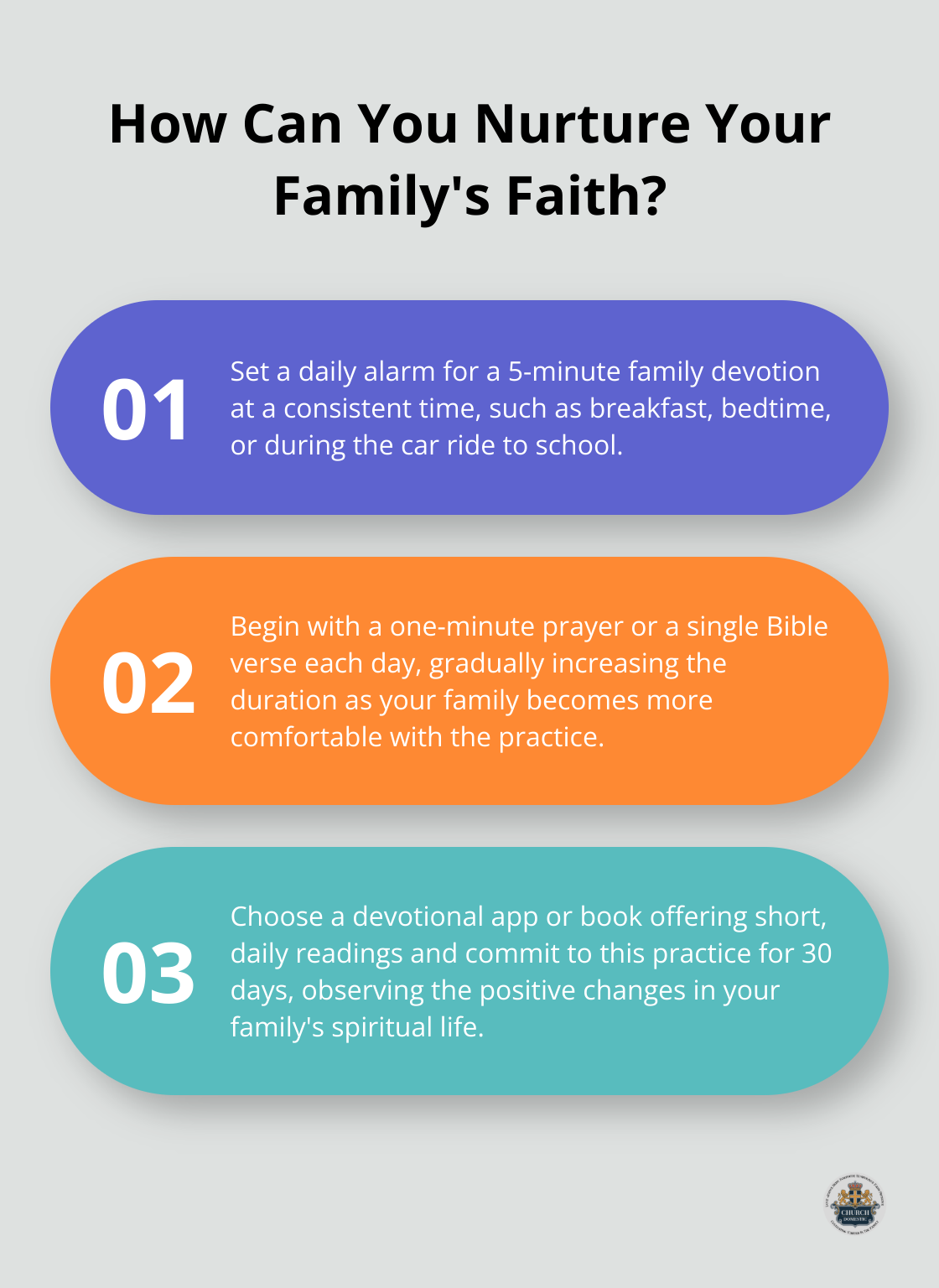
We at Church Domestic encourage you to start your journey with family devotions today. Choose a time that works for your family, whether it’s over breakfast, during the evening meal, or before bedtime. Use a devotional app, read a short Bible passage, or pray together (the key is consistency, not perfection).
The impact of regular family devotions extends far beyond the moment itself. It shapes your family’s values, strengthens bonds, and creates a legacy of faith. For more resources on family devotions and spiritual growth, visit us at Church Domestic.

